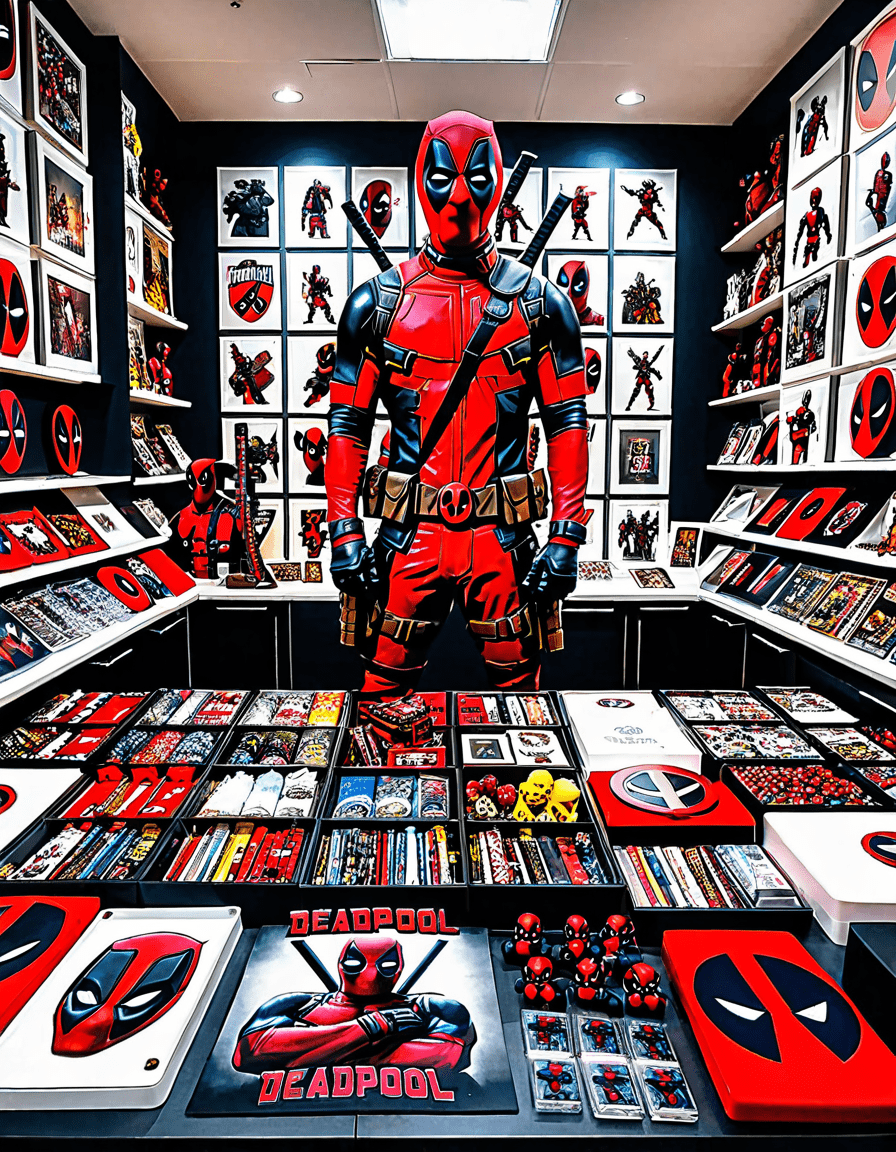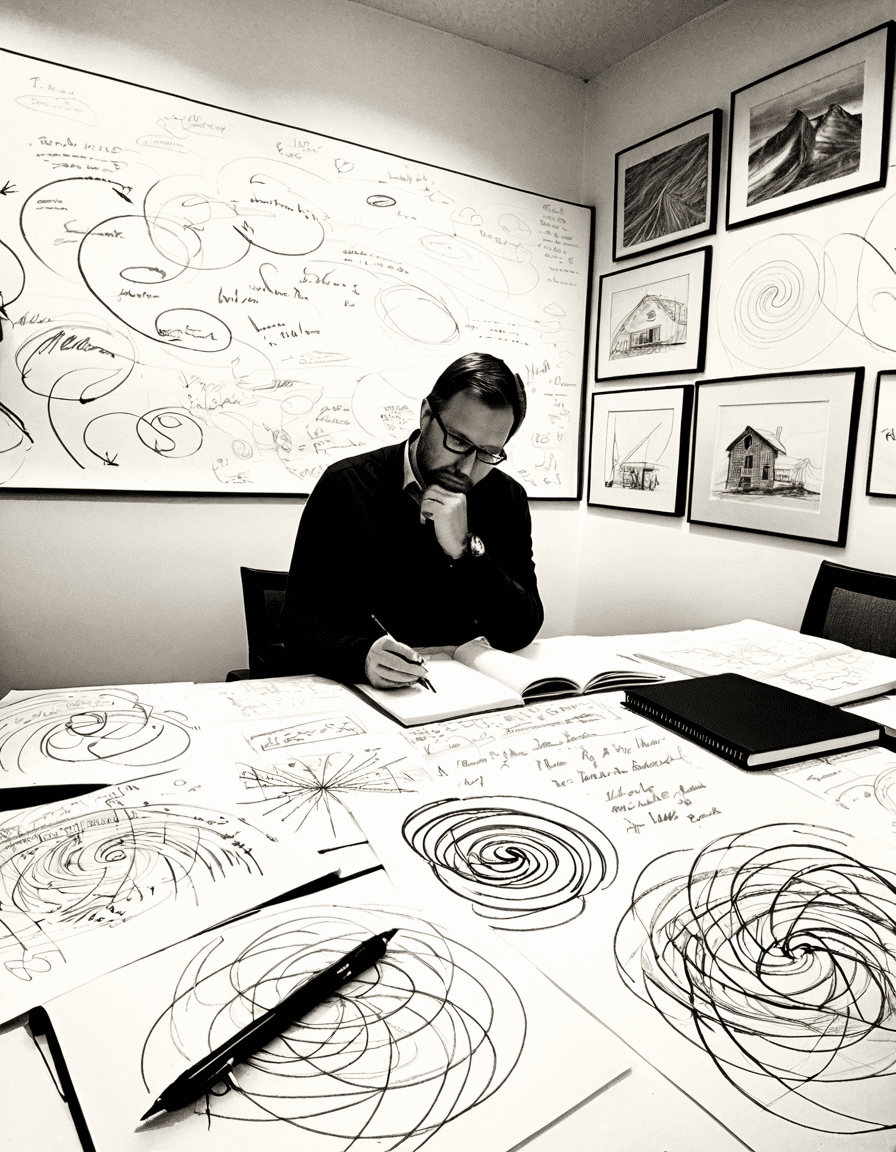Tim Miller’s journey in filmmaking is a stunning narrative of artistic courage and innovative storytelling. Best known as the director of the groundbreaking Deadpool series, this multifaceted creator has reshaped how we experience superhero narratives. With a knack for balancing humor and action, Tim Miller has proven that comic book adaptations can be both irreverent and heartfelt.

The Evolution of Tim Miller’s Career: Key Milestones
Foundation in Visual Effects
Before stepping into the director’s chair, Tim Miller built his reputation in the visual effects industry. Working with companies like Blur Studio, he dived into cutting-edge technology and animation that would later influence his unique storytelling style. His background in visual aesthetics allowed him to fuse animated content with live-action, a skill perfectly showcased in the dazzling visuals of Deadpool.
These early experiences provided a springboard for Miller’s creative endeavors. His work on popular animated sequences in Halo 2 solidified his ability to craft engaging, visually spectacular narratives. By the time he transitioned to directing, his foundation in visual effects set him up for success, enabling him to push boundaries other filmmakers wouldn’t dare approach.
Moreover, this foundation revealed a driving ethos for Miller: creativity has no limits. It doesn’t matter if he incorporates actors like Tim Roth or blends genres—what counts is the dedication to serving the story.
The Birth of Deadpool
Miller’s directorial debut with Deadpool in 2016 was nothing short of revolutionary. He embraced the character’s eccentricities, weaving together an unconventional narrative that stood in sharp contrast to traditional superhero films. By packing the film full of adult themes and humor, he carved a new niche in a genre often dominated by PG-rated formulas.
The timing couldn’t have been more perfect. The film not only broke box office records but also shifted the kids-glove approach to comic book adaptations. Who could forget that scene where Wade Wilson tackles his painful past with a gleeful blend of crass jokes and touching moments? Miller captured audiences with the idea that superhero films can be as raw and real as they are fantastical.
Additionally, Miller’s method opened the door for more R-rated offerings in an industry that was largely hesitant to tread such ground. This evolution isn’t just about a character; it’s about a movement where filmmakers can express discomfort, humor, and life experiences animatedly—something Miller executed flawlessly.
Collaboration with Ryan Reynolds
A key player in the success of Deadpool is undoubtedly Ryan Reynolds. The duo’s chemistry ignited the screen, allowing for an interpretation of the character that resonated powerfully with fans. Their collaborative process, rich with discussions and revisions, was fundamental to developing a script that maintained comic integrity while appealing to mainstream audiences.
Miller’s keen eye for humor meant understanding Reynolds’ comedic timing was crucial. By allowing the actor to play to his strengths, they crafted scenes that felt spontaneous yet meticulously planned. The resonance reached beyond just a successful film; it cemented Miller and Reynolds as a creative powerhouse in Hollywood.
With Reynolds’ improvisation skill, many scenes leaned on spontaneous dialogue, adding a layer of authenticity. The collaboration signaled not just a powerhouse duo, but a blueprint for partnerships in Hollywood that prioritize creative synergy over top-down decision-making.
Incorporating Tim Roth
Rumors swirled about Tim Roth potentially joining the Deadpool sequel, showcasing Miller’s willingness to think outside the box. Known for his compelling performances, Roth embodies depth—a key trait Miller craved for his ensemble. While the star didn’t ultimately make the cut, this consideration underlined Miller’s commitment to building a strong narrative rather than relying solely on big names.
Bringing in actors like Roth could have added layers to the characters, lending an air of complexity. Miller’s vision extended to exploring the multifaceted nature of characters, ensuring that every role contributed to the overall story, no matter their screen time.
The Influence of Chris Elliott and Chris Tucker
Miller regularly chose to invite well-known comedic talents into the fold, such as Chris Elliott and Chris Tucker. Their unique styles added a refreshing dimension to the film’s humor, allowing it to resonate widely. Elliott’s offbeat approach created memorable moments that became fan favorites, while Tucker’s rhythm and comic timing amplified the film’s pacing.
Strategic casting like this speaks volumes about Miller’s foresight and style. The ability to weave humor that goes beyond visual gags indicates a director well-versed in comic relief and narrative balance.
Connecting with Matt Walsh and Mark Kelly
In Deadpool 2, the inclusion of actors like Matt Walsh enhanced the film’s comedic narrative. Walsh’s improvisational comedy honed the spontaneous, often absurd exchanges that make the franchise unforgettable. His presence on-screen added a layer of warmth and levity in moments that might have felt overly serious.
The surprise cameo of political commentator Mark Kelly lent some cultural significance, drawing real-world parallels to the chaotic nature of the film. Miller often weaves cultural commentary through humor, which adds another layer of engagement for the audience. This connection transformed comedy into a dynamic dialogue with contemporary issues, pushing boundaries that many other films shied away from.

Tim Miller’s Continued Impact in the Industry
Tim Miller’s influence stretches far beyond Deadpool. His subsequent project, Terminator: Dark Fate, showcases his continued effort to challenge cinematic conventions. Although it garnered mixed reviews, the film maintained Miller’s distinctive touch by merging intense action sequences with emotional story arcs.
One key takeaway from Miller’s style is his commitment to character-driven narratives. He believes in creating superhero and science fiction films that focus on emotional depth rather than just technical effects. This philosophy stands out in an industry often caught in a cycle of spectacle over substance.
In a landscape where superhero films dominate, filmmakers can learn from Miller’s path. By mixing humor, humanity, and artistry, he redefined what audiences expect from action-packed narratives, pushing the envelope of what these genres can achieve.
The Legacy of Tim Miller: Shaping Future Narratives
Tim Miller has left an indelible mark on the film industry through his willingness to innovate and risk. His contributions have ignited a flame for aspiring filmmakers eager to explore unconventional narratives. By balancing themes of identity and humor with relatability, he solidified his reputation as a visionary, one whose influence is likely to resonate for years to come.
Miller’s legacy provides a beacon for emerging creators. As the industry evolves amidst changing cultural narratives and technological advancements, his journey urges filmmakers to explore unconventional paths. In this ever-changing cinematic world, Miller advocates for stories that encompass a diverse range of voices and experiences.
As superhero films variously fill our screens, it’s the pioneering spirit of creators like Tim Miller that will continue to define the genre. By encouraging bold risks in storytelling, he paves the way for the next generation to transform the cinematic landscape. In short, Tim Miller embodies what it means to innovate, entertain, and engage through the magic of film.
Miller, through his works, vividly depicted the shifting tides in cinema and culture, reminding us that the true heart of filmmaking lies not just in spectacle, but in storytelling that resonates. Curious about Tim Miller’s partners in comedy? Look no further than the captivating Matt Bomer’s movies and TV shows or explore the exciting antics of Mikey Madison’s films.
So the next time you pop some popcorn for a superhero flick, remember it’s not just about the explosions or quips; it’s about the art of weaving a compelling story, which Tim Miller exemplifies perfectly.
Tim Miller: The Groundbreaking Visionary Behind Deadpool
A Journey Like No Other
Tim Miller’s journey into filmmaking is as exciting as the stories he brings to life on the screen. Before he shook up Hollywood with Deadpool, he began his career in the world of animation, working on stunning projects that reshaped his creative style. Fun fact: Tim was part of the production team for the animated short that gained cult popularity, much like the teen comedy Freaks and Geeks, which brilliantly captured teenage angst in a relatable way. Despite his big-screen success, Tim stays connected to his roots through collaborations with lesser-known artists and innovative projects. For instance, he was inspired by directors like Katharine McPhee, who always pushes creative boundaries.
Breaking Barriers
Tim Miller didn’t just direct a superhero film; he redefined the genre. He introduced a raw, unfiltered take on the traditional comic book narrative, tackling themes like identity and morality, marked with biting humor. Miller’s knack for blending action with relatable human experience can be seen in films starring actors like Matt Bomer who thrive in roles that challenge societal norms. What’s more, Miller isn’t afraid to mix genres, like in his collaboration with Kennedy Owen on pilot episodes that twist familiar tropes into something fresh. This adventurous spirit reflects his passion for telling captivating stories, showcasing a variety of talents and narratives.
A Look Ahead
In addition to revolutionizing superhero films, Tim Miller is known for being a digital nomad, constantly exploring new storytelling techniques, much like the innovators at the Digital Nomad Institute. His desire to break free from conventional filmmaking structures led him to experiment with formats such as VR. This opens doors to immersive experiences for audiences as films evolve. Interestingly, his foray into this tech-driven space aligns with the careers of rising stars like Mikey Madison, who are proving that there’s more to storytelling than just traditional formats. As Tim continues to push boundaries, fans can expect more projects that surprise and delight, possibly unearthing fresh talent and unique stories from unexpected corners of the industry.





